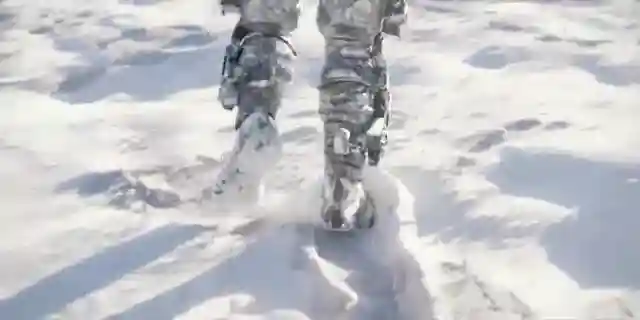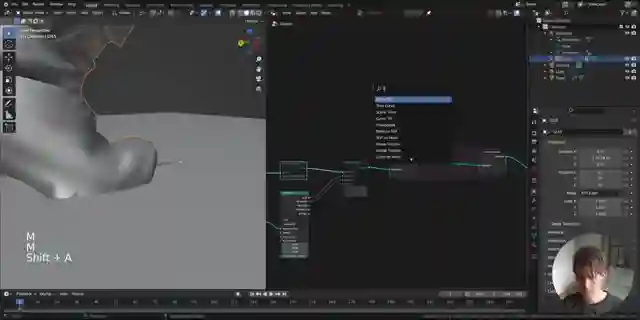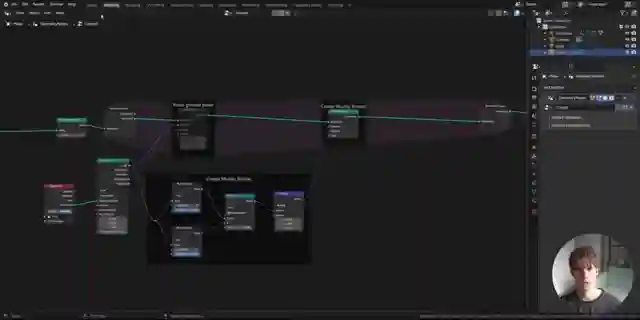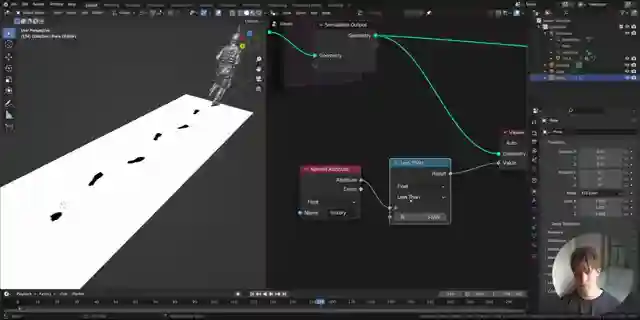Master Blender Simulation Nodes: Create Realistic Tracks & Footsteps

- Authors
- Published on
- Published on
In this thrilling Blender tutorial by Bad Normals, we dive headfirst into the exhilarating world of simulation nodes. Picture this: mud, snow, paint, ripples - all at your fingertips, all based on simple logic. It's a symphony of creativity, a dance of digital artistry. But how do we achieve such visual marvels? Well, it all starts with Blender 3.6, a ground to stand on, and a character to animate. Whether you choose to bring your character to life through your own movements, Mixamo's library, or even a video motion capture, the possibilities are endless.
Once you have your character and ground ready, it's time to make the magic happen. Using geometry nodes and the powerful "set position" node, you can move the ground dynamically as your character's feet make contact. The key lies in the intricate dance of rays and targets, ensuring precision in every step. And let's not forget the importance of visualization - seeing is believing, after all. With simulation nodes, your progress is not just saved, but meticulously executed frame by frame, ensuring a seamless animation that captures every detail.
But wait, there's more! To truly elevate your simulation game, enter the world of "blur" attribute nodes. These nifty tools help you create that realistic muddy border, adding depth and authenticity to your digital masterpiece. And to top it all off, a scale node based on frame count puts you in control, limiting excessive displacement and giving you the power to fine-tune your animation with precision. So buckle up, fellow Blender enthusiasts, because with Bad Normals as your guide, the possibilities are endless, and the journey is nothing short of exhilarating.

Image copyright Youtube

Image copyright Youtube

Image copyright Youtube

Image copyright Youtube
Watch Blender Simulation Nodes Beginner Tutorial on Youtube
Viewer Reactions for Blender Simulation Nodes Beginner Tutorial
Positive feedback on the tutorial and the depth of explanation provided
Praise for the quality and style of the video
Excitement for upcoming courses and content
Appreciation for the detailed practical examples and explanations
Comparisons between Blender and Houdini in terms of performance and features
Requests for more tutorials and information on exporting models
Comments on the use of blur nodes and specific attributes
Compliments on the presenter's English and teaching style
Interest in learning more about geometry nodes and simulation nodes
Questions about software compatibility and microphone equipment
Related Articles

Revolutionizing Fractal Art: 4D Creation in Blender
Discover how Bad Normals revolutionizes fractal art with a groundbreaking 4D creation process in Blender. Explore quaternion manipulation, geometry nodes, and shader techniques to unlock a new realm of visual possibilities. Elevate your fractal artistry today!

Master Tree Design in Blender with AnyTree Tutorial
Learn how Bad Normals introduces AnyTree, a powerful tool for creating custom tree shapes effortlessly in Blender. From modeling to pathfinding, this tutorial covers grid creation, point removal, and tree-like structure development, offering a comprehensive guide for innovative tree design.

Bad Normals Road to Infinity Challenge: Win Premium Prizes!
Join the Bad Normals team in the "Road to Infinity" challenge, where artists blend diverse worlds seamlessly. Win premium prizes from KitBash 3D, Bee Productions, and Sense Labs. Fox Render Farm offers $75 render credit for all participants. Unleash your creativity and compete for cutting-edge rewards!

Mastering Object Morphing: SDFs, Metaballs, and Remeshing for 3D Graphics
Explore object morphing using signed distance fields (SDFs) and metaballs in this Bad Normals video. Learn how to blend objects seamlessly and overcome topology challenges with remeshing for stunning 3D graphics.
